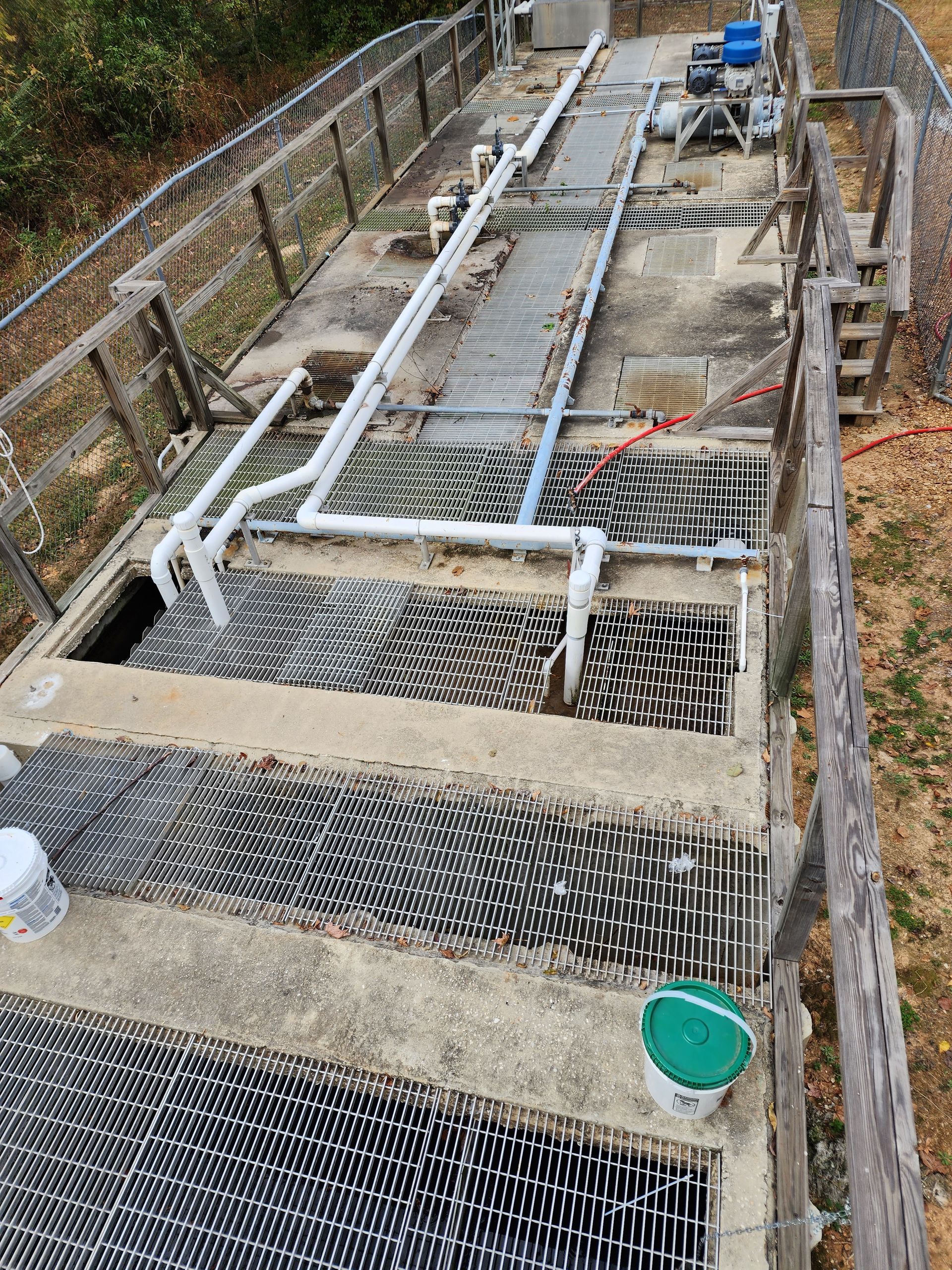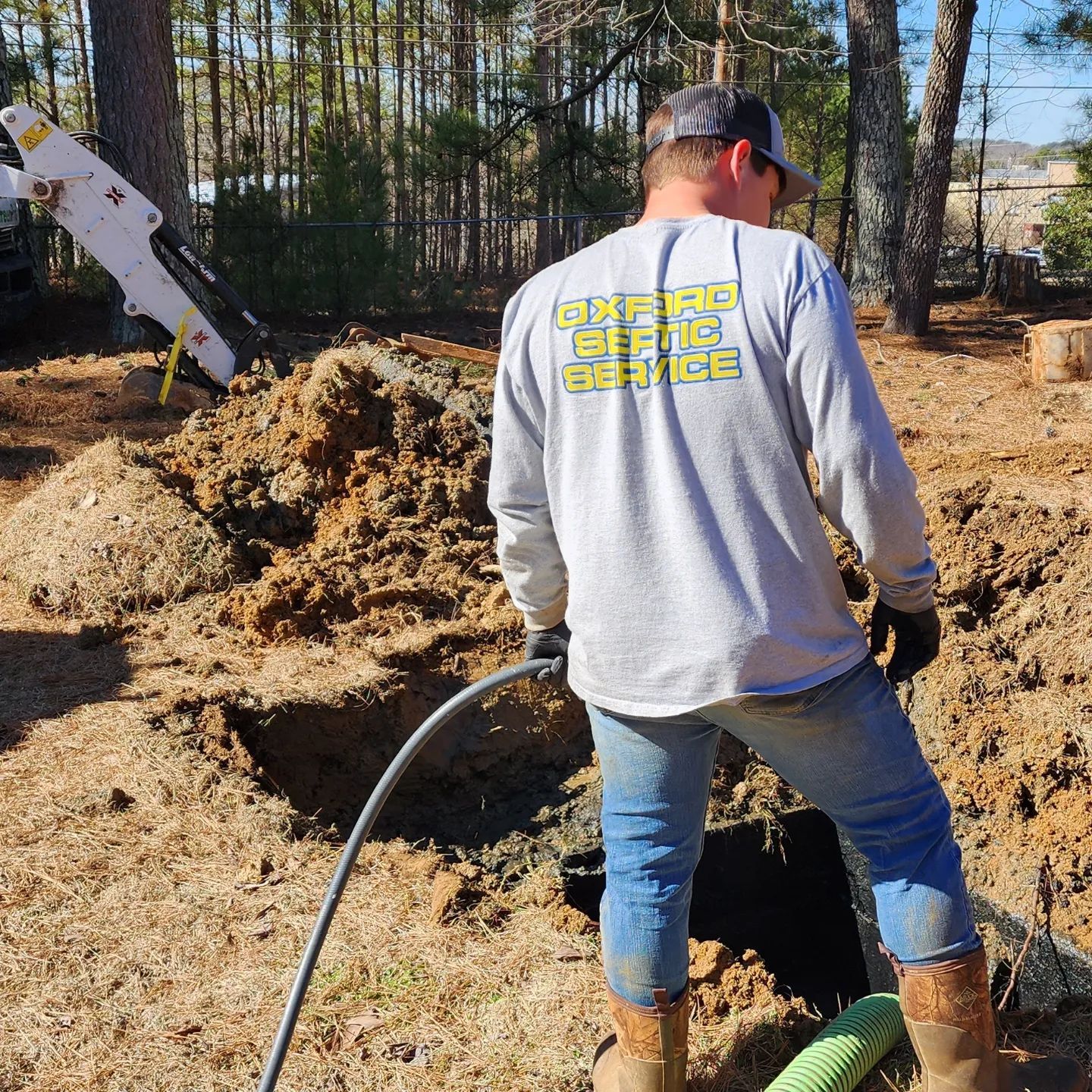The Septic System Basics Every Homeowner in Oxford, MS Should Know
January 15, 2024
The Septic System Basics Every Homeowner in Oxford, MS Should Know
At Oxford Septic Service, we understand that septic systems are a vital part of many Oxford, MS homes. These systems play a crucial role in wastewater treatment for properties that aren't connected to municipal sewage systems. In this comprehensive guide, we'll explore the fundamental aspects of septic systems, providing you with the knowledge you need to keep your system running smoothly.
1. What Is a Septic System?
A septic system is an on-site wastewater treatment system that is commonly used in rural and suburban areas where homes are not connected to a centralized sewage system. It consists of several key components:
Septic Tank: The septic tank is a buried, watertight container that receives and temporarily stores wastewater from your home. It allows solids to settle to the bottom, forming sludge, while oils and grease float to the top as scum.
Distribution Box: This box evenly distributes effluent (treated wastewater) from the septic tank to the drain field.
Drain Field (Leach Field): The drain field is a network of perforated pipes or chambers buried in trenches filled with gravel. It receives effluent from the distribution box and allows it to percolate into the soil for further treatment.
2. How Does a Septic System Work?
Understanding the basic septic system process is essential. Here's a simplified overview:
Wastewater Collection: All wastewater from your home, including toilets, sinks, showers, and laundry, flows into the septic tank.
Separation and Treatment: In the septic tank, solids settle to the bottom to form sludge, while scum floats to the top. Bacteria in the tank break down the organic matter in the wastewater.
Effluent Distribution: Clarified liquid, known as effluent, exits the septic tank and is evenly distributed in the drain field.
Soil Treatment: In the drain field, effluent percolates through the soil, where natural processes further treat it before it returns to the groundwater.
3. Maintenance Is Key
Regular septic system maintenance is vital to ensure it functions correctly. Key maintenance tasks include:
Septic Tank Pumping: Sludge and scum levels in the septic tank increase over time. Periodic pumping, typically every 3 to 5 years, is necessary to prevent clogs and backups.
Effluent Filters: Some septic systems have effluent filters to prevent solids from reaching the drain field. These filters need occasional cleaning.
Watch Your Water Usage: Excessive water usage can overload your septic system. Be mindful of water conservation to avoid issues.
4. Signs of Septic System Problems
Recognizing the signs of septic system issues is crucial to addressing them promptly. Common signs of trouble include:
Slow Drains: If multiple drains in your home are slow, it may indicate a septic problem.
Foul Odors: Unpleasant odors, especially near the drain field or septic tank, can signal trouble.
Pooling Water: Puddles or standing water in the yard could indicate a drain field issue.
Sewage Backup: If sewage backs up into your home, it's a severe problem that requires immediate attention.
5. The Importance of Professional Services
While some maintenance tasks can be DIY, such as conserving water and being cautious about what you flush, many aspects of septic system care require professional services. These include:
Septic Tank Pumping: A licensed technician should pump your septic tank to remove accumulated sludge and scum.
Inspections: Regular inspections can catch issues early and prevent costly repairs.
Repairs and Upgrades: If problems arise, professional repairs or system upgrades may be necessary to ensure proper functioning.
6. Eco-Friendly Practices
Septic systems can be environmentally friendly when properly maintained. Here are some eco-conscious practices:
Water Conservation: Using water-efficient appliances and fixtures can reduce stress on your septic system and conserve water.
Proper Disposal: Avoid flushing non-biodegradable items, chemicals, and pharmaceuticals, as they can harm your septic system and the environment.
Native Landscaping: Planting native vegetation in your drain field area can help absorb excess moisture and nutrients from effluent.
In conclusion, at Oxford Septic Service, we believe that a well-maintained septic system is essential for the health and comfort of your Oxford, MS, home. Understanding how your septic system works, recognizing signs of trouble, and scheduling regular professional maintenance are key steps in ensuring its longevity and functionality. If you have any questions or need septic system services, don't hesitate to contact trusted professionals like us for guidance and assistance.

Commercial properties rely on septic systems to manage wastewater efficiently and comply with environmental regulations. Proper maintenance is crucial to prevent system failures, protect public health, and ensure uninterrupted business operations. In this guide, Oxford Septic Services shares valuable tips to help business owners maintain their commercial septic systems effectively. Chapter 1: Understanding Commercial Septic Systems Overview of the components and functioning of commercial septic systems, including tanks, pipes, and drain fields Explanation of the differences between residential and commercial septic systems, such as larger capacity requirements and higher wastewater volumes Chapter 2: Implementing Regular Maintenance Practices Importance of scheduling routine maintenance tasks, such as septic tank pumping, inspections, and grease trap cleaning, to prevent system failures and maintain compliance with regulations Tips for creating a maintenance schedule and partnering with qualified professionals, like Oxford Septic Services, to ensure timely service Chapter 3: Monitoring System Performance Discussion of the importance of monitoring system performance indicators, such as wastewater flow rates, effluent quality, and odors, to detect issues early and prevent costly repairs Recommendations for installing monitoring devices, such as flow meters and alarm systems, to provide real-time feedback on system health Chapter 4: Implementing Best Practices for Waste Management Explanation of best practices for managing wastewater generated by commercial operations, including proper disposal of grease, chemicals, and other contaminants Importance of educating employees about the impact of their actions on the septic system and providing training on proper waste management procedures Chapter 5: Maintaining Compliance with Regulatory Requirements Overview of regulatory requirements for commercial septic systems, including permitting, reporting, and record-keeping obligations Tips for staying informed about local regulations and working with regulatory agencies to ensure compliance Chapter 6: Planning for Emergency Situations Importance of developing an emergency response plan to address system failures, leaks, and other unforeseen events promptly Recommendations for establishing relationships with emergency service providers, like Oxford Septic Services, to ensure rapid response and minimize downtime Conclusion: Proper maintenance is essential for ensuring the reliable operation of commercial septic systems and protecting public health and the environment. By implementing regular maintenance practices, monitoring system performance, and staying informed about regulatory requirements, business owners can minimize the risk of system failures and ensure compliance with environmental regulations. With the support of experienced professionals like Oxford Septic Services, commercial property owners can maintain efficient and reliable septic systems for years to come.

Septic systems play a crucial role in managing wastewater for millions of homes and businesses across the country. Regular maintenance is essential to ensure these systems function efficiently and avoid costly repairs. In this guide, Oxford Septic Services sheds light on the importance of regular septic system maintenance and provides valuable insights to help homeowners and business owners understand why proactive care is essential. Chapter 1: Preventing System Failures Explanation of how regular maintenance, including septic tank pumping and inspections, helps prevent system failures by identifying and addressing issues before they escalate Examples of common problems that can lead to system failures, such as clogs, leaks, and drain field saturation, and how proactive maintenance can mitigate these risks Chapter 2: Protecting Property Value Discussion of how a well-maintained septic system enhances property value by providing reliable wastewater treatment and minimizing the risk of property damage from system failures Importance of maintaining accurate maintenance records and ensuring compliance with local regulations to demonstrate the system's integrity to potential buyers Chapter 3: Safeguarding Health and Safety Overview of the health and safety hazards associated with neglected septic systems, including groundwater contamination, exposure to pathogens, and foul odors Role of regular maintenance in safeguarding public health and protecting the environment from the harmful effects of untreated wastewater Chapter 4: Extending System Lifespan Explanation of how regular maintenance extends the lifespan of septic systems by reducing wear and tear on system components and preventing premature failure Importance of proactive care in preserving the structural integrity of tanks, pipes, and drain fields to avoid costly replacements Chapter 5: Minimizing Environmental Impact Discussion of the environmental benefits of regular septic system maintenance, such as reducing nutrient pollution, preserving water quality, and conserving natural resources Role of environmentally friendly maintenance practices, such as soil aeration and bioaugmentation, in minimizing the ecological footprint of septic systems Chapter 6: Compliance with Regulations Overview of regulatory requirements for septic system maintenance, including pumping frequency guidelines, inspection mandates, and reporting obligations Importance of staying informed about local regulations and working with licensed professionals, like Oxford Septic Services, to ensure compliance and avoid penalties Conclusion: Regular septic system maintenance is essential for protecting property value, safeguarding health and safety, and minimizing environmental impact. By understanding the importance of proactive care and partnering with trusted professionals like Oxford Septic Services, homeowners and business owners can ensure their septic systems remain reliable and efficient for years to come.
